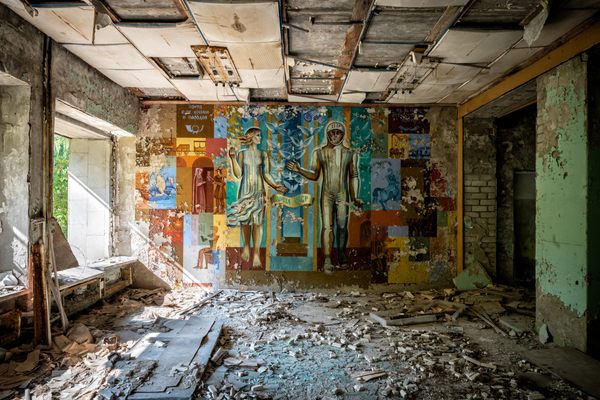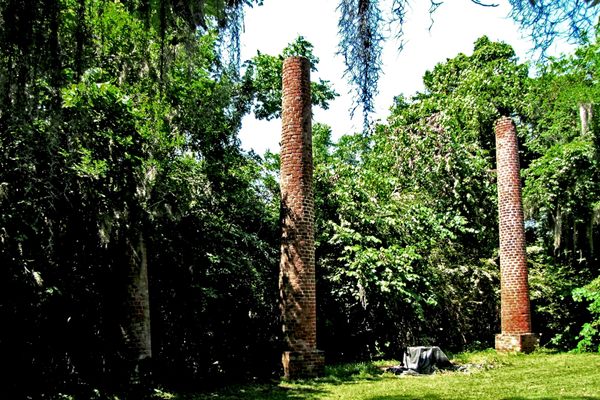Centralia: The Ghost Town Abandoned Because of the Fire Beneath It
Centralia today (all photographs by the author)
When you think of American ghost towns, it’s likely that you picture a crumbling Wild West outpost. However, in the middle of Pennsylvania, there’s a town that disappeared far more recently. In many ghost towns, it’s the collapse of an industry that caused people to leave. In Centralia, it was the industry itself that resulted in this abandoned town.
Centralia was a quaint town of over 2,000 residents in Columbia County, Pennsylvania. The large coal deposits below the ground helped turn Centralia into a bustling business center in the early parts of the 20th century. All was well until 1962, when an exposed seam of coal caught on fire during a routine trash burning at the landfill.
Sign for Centralia
Over the next two decades, several attempts were made to put out the underground fire, but the its virtually unlimited source of fuel made the attempts futile. Citizens of Centralia knew of the fire, but it wasn’t until 1979 that its extent was fully understood by residents and scientists. It was a local gas station owner who discovered the fire’s true danger when he measured the temperature of his underground storage tanks at 172 degrees — 100 degrees higher than normal.
A few years later, a young boy was swallowed by a large sinkhole caused by the mine fire and was lucky to survive. That incident, the increasing number of sick residents, and the rising levels of carbon monoxide spelled the end for Centralia.
Over the next few decades, more and more local residents moved from Centralia. As the population decreased, buildings were torn down until almost nothing was left.
Today, only a handful of buildings and residents remain in Centralia. What was once a bustling town is now eerily quiet.
Empty streets
A stop sign for no traffic
As you drive along the streets, it becomes harder and harder to tell that a town once stood there: forests have reclaimed the land, remnants of sidewalks buckle beneath expanding roots, stairs lead nowhere, and sidewalks have crumbled. At a few intersections, lonely stop signs feel out of place without traffic.
No visit to Centralia is complete without a stroll down the abandoned Route 61. Stretching about three quarters of a mile, this destroyed section of road has been given the nickname “The Graffiti Highway,” because it is covered in tags and drawings. Some of it is insightful, and some is art, but a significant amount is less than family-friendly.
“Welcome to the Graffiti Highway”
Remains of Route 61
Roughly mid-way along the abandoned road is the best evidence of the destructive forces of the fire burning below. Like a scene from a post-apocalyptic movie, a large crack has torn its way through the highway. It was this crack that necessitated the entire highway be rerouted to avoid massive repair bills. Today, having been left untouched for many years, it’s a great place to understand the power of the forces below Centralia.
Amidst all the destruction, evidence of the town’s past still remains on the outskirts of town. At Centralia’s three cemeteries, grass is still mowed and some graves show signs of visitors. A small park in town still holds Centralia’s time capsule. Buried just a few short years after the mine fire was started, it’s due to be opened in 2016, perhaps giving the town one last hurrah.
Abandoned trash can
The last remaining church in Centralia
The future of Centralia is unfortunately no brighter than its present. Scientists estimate that there may be enough coal underground to burn for 250 more years, ensuring that no one will return to rebuild Centralia in the short term. However, a sliver of hope can be found along the hillsides above Centralia. In an area destroyed by mining there are now wind turbines producing clean energy for the surrounding community. Maybe it will be clean energy that becomes the legacy of this forgotten coal town.
Jim Cheney is a freelance travel writer and photographer based in Harrisburg, Pennsylvania. You can find more of his work at UncoveringPA.com and Tripologist.com.
















Follow us on Twitter to get the latest on the world's hidden wonders.
Like us on Facebook to get the latest on the world's hidden wonders.
Follow us on Twitter Like us on Facebook